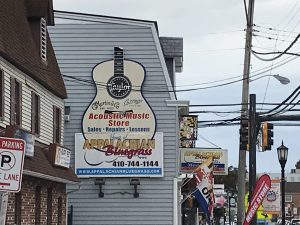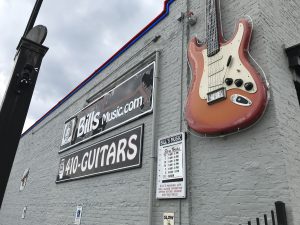Nathan Shifflett
Musical history is something that Baltimore has in spades. After all, few cities in the United States can boast of creating a genre of music unique to that city (I am referring to Baltimore club music of course), but this musicality extends beyond just the city limits. While the city itself holds primacy in the creation of club music, rock, jazz, hip-hop, and pop, a far different kind of music is more common a bit further outside city limits. DJ’s, turntables, and the pulsing beat of the clubs gives way to banjos, cowboy hats, and something a bit more rustic in flair. Outside the cities, stores like the Appalachian Bluegrass Shoppe point towards a preference for Bluegrass, country, and folk music.

However, something that all these different genres and musical cultures share is a distinct change in the way people consume music these days. While concertgoing and tours by famous artists have come back from the pandemic stronger than ever, local artists are still dealing with the challenges brought on by changes from even before the pandemic. “Music is much easier to get to than it would have been in the past” explains my music teacher, a professional Bluegrass guitar and mandolin player from the Baltimore area. He explained that, while people today have so much more access to music, it has the downside of making it hard for newer talent to gain a foothold. “Recently with a lot of new talent like Billy Strings and Molly Tuttle, they can play their instruments like you wouldn’t believe, but they’ve been hiding out to play their own stuff” he said.

In the past, people couldn’t simply tell their phone to play the newest and most popular music, they had to engage with their local music scene and discover what they liked. This meant attending concerts, meeting people, and poring over the music store’s latest stock. Even if someone didn’t really like what was being played, they still explored it, listened to it, and honed their understanding of what they wanted to hear. Nowadays, a person can ask a computer program to create a playlist for them from whatever’s popular, no significant legwork required. Up-and-coming artists and those without a preexisting following aren’t as likely to reach new audiences as streaming services tend to favor what is already topping the charts. Things aren’t all doom-and-gloom though, as local music scenes are still going strong. In my own experience, opportunities to listen to live music multiplied after the coronavirus lockdowns ended, enough that someone taking an evening walk through a place like Catonsville might hear less crickets and birds, and more country guitar and delta blues banjo.
